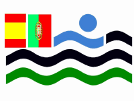Biological purification
The water treatment is purely biological-mechanical, based on the model of nature.
The food pyramid in the bath with biological water treatment (????)
Water quality must be achieved through nutrient management to reach the planned trophic level using the natural food chain.
The broad base of the food pyramid consists of protozoa such as bacteria, algae and fungi. Where natural water and light meet, small algae grow rapidly. They extract nutrients from the water and use them to form biomass and produce oxygen, the basis for many other cleansing processes.
Zooplankton are the next link in the food chain. They are mainly small crustaceans that continuously filter and eat the algae and bacteria in the water. Therefore, they are an important element in the "hygiene performance", the elimination of pathogenic germs. Almost all potential pathogens do not arise in the water, but are intestinal bacteria brought in by users or vertebrates. In the oxygen-rich water of a swimming pond, intestinal bacteria cannot multiply and are quickly killed by zooplankton.
Mosquito larvae also eat plankton and detritus (decaying organic matter). They breathe air at the surface and can therefore also thrive in oxygen-free and over-fertilised waters. However, they are easy prey for all predators and are immediately eaten in nutrient-poor waters with an established biology. Therefore, they do not appear in heavily used swimming ponds and natural pools. But they can multiply rapidly in small puddles and flower pots on the side of the pool.
In turn, zooplankton are eaten by insects and their larvae, as well as by newt larvae and small fish. Small fish that multiply rapidly without other predators (e.g. invasive gambusia) can decimate zooplankton to such an extent that it fails as a natural regulator of phytoplankton. This leads to heavy algal blooms and green water. Therefore, fish are not used in the swimming pond or natural pool.
Underwater plants naturally compete with algae and play an important role in phosphorus fixation. Under favorable conditions, plants dominate and prevent strong algae growth; under unfavorable conditions, algae dominate. However, underwater plants require a certain level of nutrients in the mesotrophic to oligotrophic range, which is why they are used in category 1-3 swimming ponds.
**I THINK A DEFINITION OF THE DIFFERENT CATEGORIES OF POOLS WOULD BE MISSING.
If optimum water transparency (natural pool, category 4-5) is the planning objective, rapid biological filters are used. Biofilm, a colorful community of microorganisms that take on the role of zooplankton and aquatic plants, grows on surfaces exposed to strong currents. The biofilm filters algae and bacteria from the water and fixes nutrients. The filters must be equipped with a rinsing device in order to harvest the biofilm and thus remove the stored nutrients from the closed system of the natural pool.
Wind-blown leaves and pollen as well as dead organisms sink to the bottom and form an organic sediment there. This is broken down and mineralised by other small creatures, so that the bound nutrients are released again and return to the water cycle. By sucking up the sediment, which is used as a natural fertilizer for plants, large quantities of nutrients are removed from the cycle.
